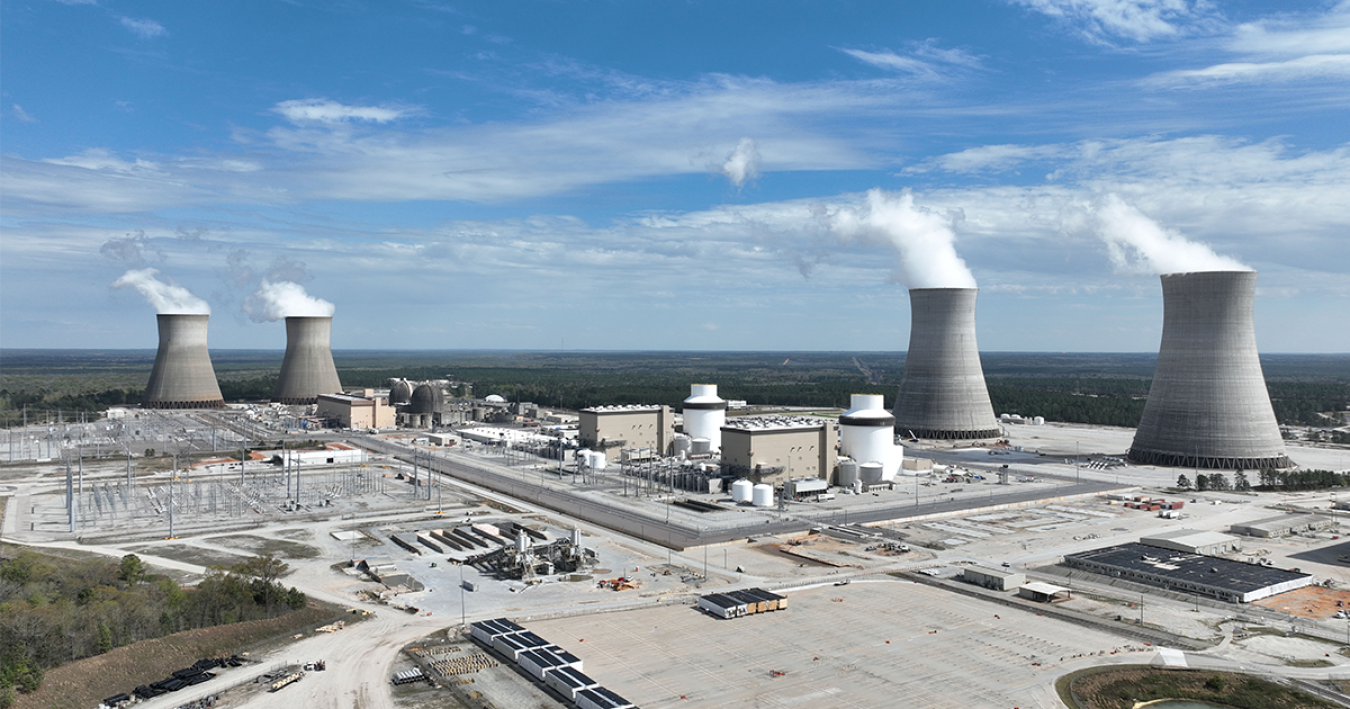ADVANCE Act is latest legislative win to revitalize domestic nuclear power sector in U.S.
July 10, 2024
Plant Vogtle, located in Waynesboro, Georgia, is the largest generator of clean power in the United States.
President Biden signed the Fire Grants and Safety Act into law chalking up a BIG win for our nuclear power industry.
Included in the bill is bipartisan legislation known as the ADVANCE Act that will help us build new reactors at a clip that we haven’t seen since the 1970s.
And there is no time like the present to get started.
Energy demand is expected to grow over the next decade as data centers, electric vehicles, and industrial processes all search for a clean and reliable source of power.
Nuclear will be part of that solution, which is why the United States has already committed to tripling our nuclear capacity and is making moves to help secure our clean energy future.
But in order to do that, we need legislation like the ADVANCE Act to help speed up the deployment and licensing of new reactors and fuels, and our office stands ready to support this effort.
Incentivizing Competition
The ADVANCE Act builds on the successes of previous legislation to develop a modernized approach to licensing new reactor technologies.
Many of the advanced reactors under development use different coolants than what is currently used in our commercial light-water reactors—making the regulatory process more of a challenge.
The ADVANCE Act directs the U.S. Nuclear Regulatory Commission (NRC) to reduce certain licensing application fees and authorizes increased staffing for NRC reviews to expedite the process.
It also introduces prize competitions that the U.S. Department of Energy (DOE) can award to incentivize deployment.
These awards are subject to Congressional appropriations but will cover the total costs assessed by the NRC for first movers in a variety of areas, including the first advanced reactor to receive an operating or combined license.
This should quicken the pace for innovation and get shovels in the ground sooner to start building more domestic reactors.
We’ve already seen some incredible progress in this area.
This past year, the NRC certified the nation’s first small modular reactor. It also issued its first construction permit for a non-light water design as part of a project that we are supporting through our Advanced Reactor Demonstration program.
ADVANCEs in Microreactor Deployments
Another development in this bill is its focus on small reactor technologies, known as microreactors.
These compact reactors will be small enough to fit on a semi-truck and can be deployed around the country, including remote locations and military bases for reliable heat and power.
The ADVANCE Act directs the NRC to develop guidance to license and regulate microreactor designs within 18 months. It also eliminates costs associated with pre-application activities and early site permits at DOE sites or other locations that are critical to our national security.
Both should expedite the demonstration and deployment of two microreactor projects that are being pursued by our military.
Alaska’s Eielson Air Force Base plans to build a microreactor at its site as early as 2027. The Defense Department is also gearing up to demonstrate a high-temperature gas reactor design at Idaho National Laboratory around the same timeframe.
Repowering Coal Sites with Nuclear
The ADVANCE Act also enables the cleanup and reuse of brownfield sites, including retired or retiring coal plants.
Our analysis shows that hundreds of these coal sites could be converted into nuclear power plants to help keep high-paying jobs and economic opportunities in these energy communities.
The NRC will examine and streamline licensing processes for nuclear facilities at these sites and will also take into account the associated infrastructure as part of the process.
The NRC is currently reviewing TerraPower’s construction permit application to build its Natrium reactor near a retiring coal plant in Kemmerer, Wyoming.
If approved, it would be the first one issued by the NRC for a commercial non-light water reactor and will pave the way for other designs looking to do the same at similar brownfield sites.
Fueling the Future
Many of these new reactor designs will also require high-assay low-enriched uranium, known as HALEU, which is not yet commercially available in the United States.
The Biden-Harris Administration has taken several steps to strengthen our domestic nuclear fuel supply chain and grow our domestic capabilities to produce low-enriched uranium, including HALEU.
The ADVANCE Act bill builds on this work and Congress’ recent ban on Russian uranium imports by also prohibiting certain fuel products made in China.
This move further strengthens our domestic nuclear fuel supply chain as we work to build up an adequate fuel supply for the United States and its allies.
DOE recently made up to $2.7 billion available to purchase low-enriched uranium from domestic sources to build capacity here in the states.
We also plan to award contracts this summer through our HALEU Availability Program to ensure there is enough material to support the development, demonstration, and deployment of new reactors.
Finally, we’ll continue working with the NRC to help develop, qualify, and license new fuel concepts such as accident tolerant fuels for the commercial fleet, along with TRISO fuels that can be used in future molten salt and high-temperature gas reactor designs.
Investing in America
Overall, this is yet another wave of momentum that the United States continues to ride to advance nuclear power under President Biden’s Investing in America agenda.
The ADVANCE Act, along with the historic investments and tax incentives provided by the Bipartisan Infrastructure Law and Inflation Reduction Act, have truly reenergized our domestic nuclear power sector and repositioned us as a global leader on the technology we first developed.
We’re excited to build on our established collaborations with the NRC to accelerate new reactor deployments in the United States and look forward to streamlining our efforts across the government to help build a new secure, clean energy economy that brings everyone along for the ride.
Let’s get to work!
Dr. Michael Goff

Dr. Michael Goff is the Principal Deputy Assistant Secretary for the U.S. Department of Energy’s Office of Nuclear Energy. Prior to joining the office as the PDAS, Dr. Goff was on assignment from Idaho National Laboratory (INL) to the Office of Nuclear Energy, where he was serving his third term as senior advisor to the Assistant Secretary. Dr. Goff also served a multi-year assignment as the assistant director for Nuclear Energy/Senior Policy Advisor in the Office of Science and Technology Policy in the Executive Office of the President. He has held several management and research positions over more than 30 years at INL and Argonne National Laboratory.
Dr. Goff has more than 70 publications related to the nuclear fuel cycle including separations technology, high-level waste development, and safeguards. Dr. Goff has a bachelor's degree of nuclear engineering (1986), a MSNE (1988), and a Ph.D. in nuclear engineering (1991), all from Georgia Tech.

